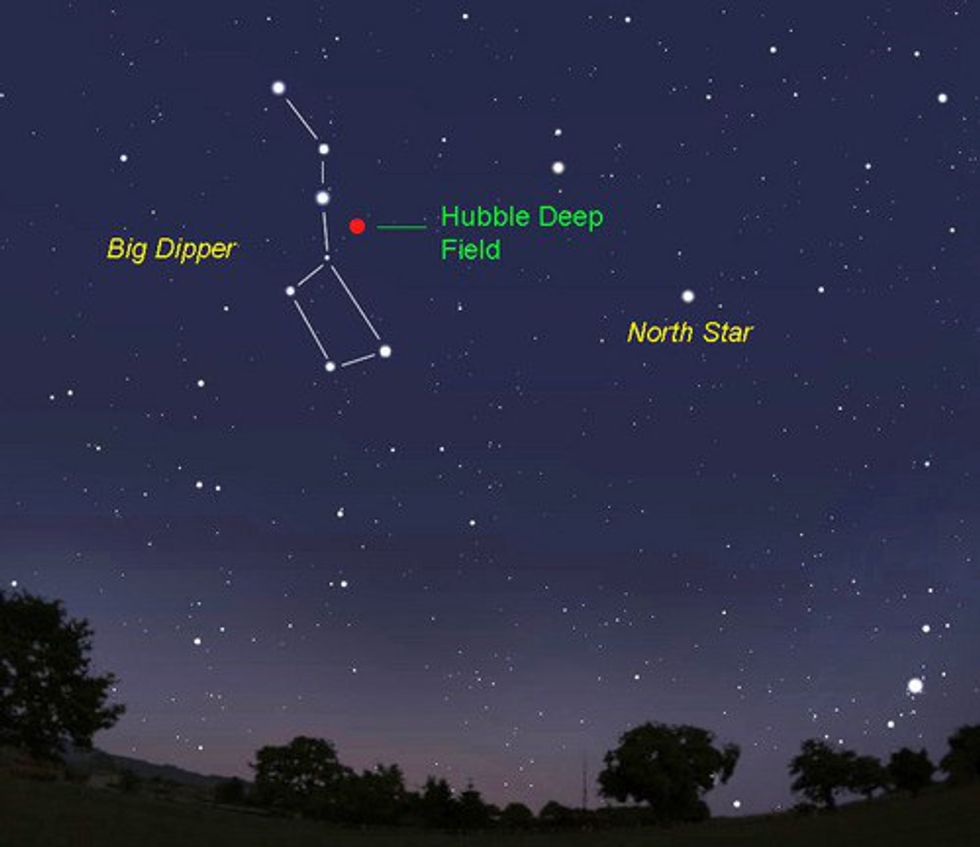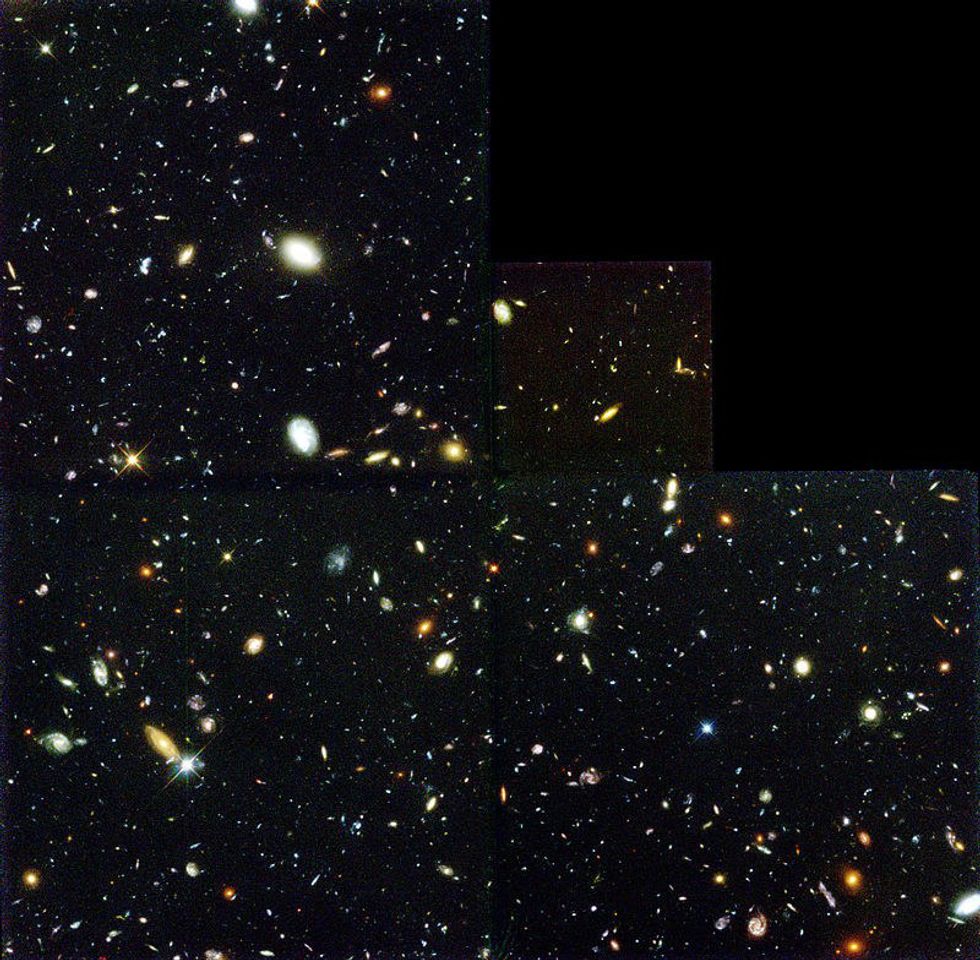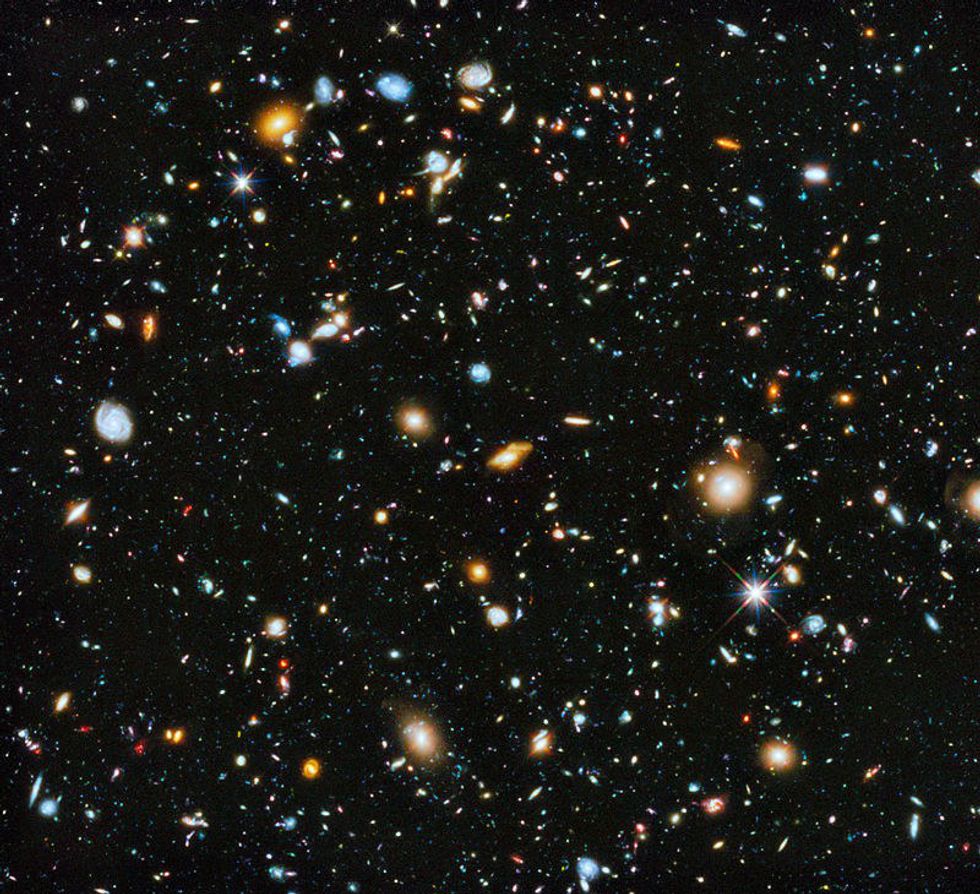Looking up into the night sky can be a quite humbling experience. Gazing at the stars can make one feel extremely small and insignificant compared to the rest of the universe. However, what the average person may not realize is that every glowing speck seen in the sky is a star (or possibly a planet) still within our home galaxy, the Milky Way, which by the way contains an estimated 100-400 billion stars. We know there are many other galaxies out there in the universe, but we didn't really know the true extent of this until December of 1995.
During this time, astronomers were studying distant galaxies and were able to use the recently repaired Hubble Space Telescope to do so. This makes a huge difference being that it doesn't take pictures from the surface of Earth, but rather in space while orbiting Earth. Since it's outside of Earth’s atmosphere, it doesn't suffer from atmospheric airglow, allowing it to detect light from much fainter/further away objects that grounded telescopes simply can't. From here, astronomers decided to point Hubble as a seemingly random, empty spot in the sky, slightly above the Big Dipper. An area, as viewed from Earth, about the size of a tennis ball 100 yards away (about 1/24 millionth of the sky). No one knew what to expect from this and risked wasting valuable time using the telescope.
Hubble began imaging the area for period of 10 days. Pictures of the area were taken in chunks and multiple times using different filters. Exposure time needed to be extremely long, ranging from 25-to-45 minutes for each picture since the light it was receiving was incredibly faint. 342 pictures later, the images were processed and stitched together. The resulting image, known as the Hubble Deep Field (HDF), is nothing short of amazing.
Every dot, blur, smear, and speck of light seen here are not stars, but rather entire galaxies filled with stars, many of them much larger than the Milky Way. There are about 3000 distinct galaxies pictured here and they are incredibly far away; ranging from 2.5 billion to a mind blowing 12 billion light years away. In comparison, the universe is estimated to be 13.7 billion years old. This means that the galaxies see in this picture are some of the first to ever form. But this also means that we’re seeing these galaxies as they looked billions of years ago, since the light from them that we are seeing took billions of years to travel to Earth. This gives astronomers critical insight on how galaxies form and evolve. Many of them pictured are irregular or abnormal in shape compared to the spiral shape commonly seen in more local galaxies. This is because collisions among galaxies were much more common in the earlier days of the universe since everything was much closer together back then.
After the major success of the HDF, NASA continued the project with second attempt in September of 1998, this time observing a point in space in the complete opposite direction of the original. The main purpose of this was to see whether or not the first image was just a lucky encounter of an abnormal cluster of galaxies. The new capture, known as the Hubble Deep Field South, handed in near identical results as the original HDF, concluding that it was not a unique case, and that the universe should look similar in any direction. Two other follow-ups have since been made, called the Hubble Ultra-Deep Field, and the most recent Hubble extreme Deep Field. Both pictures yield very similar outcomes, with thousands of galaxies littering the images, further supporting that the original was not a unique case.
Seeing how so many galaxies can be found in such a tiny point in the sky, it truly shows just how insignificant we are within the vastness of the universe. We are just a small, floating speck in the sea of space. It is estimated that there are about 100-200 billion galaxies out there in the universe, each containing billions, if not trillions of stars; many of the stars also having their own planetary systems like our own. Considering all of this, you can’t help but wonder about what all could out there. It makes it hard to believe that we, as a species, are actually alone in this universe.
Cody Baumgartle helped contribute to this report.























